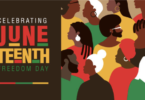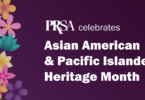In celebration of Black History Month in February, PRSA invited prominent black leaders in the public relations profession to offer their views and ideas for achieving greater racial and ethnic diversity in the industry. This is the fourth post in the series.
PRSA is also curating articles and blog posts throughout Black History Month via an open and collaborative wiki. Check out our Black History Month wiki here and add your posts.
Merriam-Webster defines culture as the “customary beliefs, social forms, and material traits of a racial, religious, or social group.” On a more general level, it is also defined as “the characteristic features of everyday existence shared by people in a place or time.”
When we describe ourselves, we tend to go for the social rundown and select labels that speak to our race, ethnicity, religion and/or place of origin. Though these terms are helpful when trying to understand others, we must remember that these labels are actually descriptors for culture.
If we were to take a decent look at a slice of the cultures present in our society, we would soon see the myriad of nuanced communities that many of us move within on a daily basis:
- Popular or Pop Culture,
- African Culture,
- African-American Culture,
- East & West Coast Culture,
- Hispanic Culture,
- Christian Culture,
- Multicultural Greek Culture,
- Southeast Asian Culture,
- Southern Culture,
- Workplace Culture,
- Asian Culture,
- West Indian Culture, etc.
As we interact with others, we should be looking for ways to deepen our cultural understanding. We should be interested in knowing what is important to people in these groups, what the central themes are and how they communicate — among other things.
For many, Black History Month is a time for reflection, acknowledgment and celebration. There is a desire to look to the past for inspiration and make a commitment to improve things for future generations.
But an overarching theme I have seen in the last few years is the celebration of the many shades of Black. It is the promotion of the idea that we are a multi-dimensional group of people. I love that we’re moving in this direction because it means that we’re beginning to acknowledge race while delving deeper and looking at culture, and I think this is where the best types of discoveries can occur. However, it is not always easy to get to this point.
The most challenging part to this journey is that you cannot truly understand culture without the right level of context. For that, you need a cultural guide.
When I discuss diversity and diversity outreach in practice, I encourage PR professionals to first take a look at themselves. A few good questions to ask include:
- What cultures are you a part of?
- Do you or others in your group ever connect with people from other cultures?
- Which cultures are those?
- How deep are those connections?
By answering these questions, we’re better able to understand who we are and where we fit in relation to other groups. The next step would be to think about the person or group of people that you would like to reach. What cultures are present there? What are the major traits? Any sensitivities to be aware of?
This level of thought is so important because without it, we are passing up the opportunity to truly connect with those around us. They often say that the first impression is the lasting impression; I’m going to dare to say that the first connection could be a lasting connection.
To this point, I have spoken at a very general level because I believe that this applies to a variety of situations, but let’s focus on the workplace for a moment.
Could you imagine the types of true connections that you could make if you linked with co-workers, bloggers, clients and journalists; not simply as a result of their function but on another level as people with unique interests and cultural backgrounds?
There is so much potential, but remember this is not a one-way endeavor. We’re all a part of different cultures, and a result, we have a lot to learn and teach. So my last question for you is this: If you were asked to serve as a cultural guide for more than one of your groups, could you do it?
James S. Walker is a member of APCO Online, the digital arm of the global public relations firm APCO Worldwide. He blogs about PR/social media at PR Prescriptions and started the Socially Diverse Project in 2010 to chronicle his journey in search of diverse, culture-rich conversations online.







[…] Read the entire article at PRSAY. […]
[…] This piece was originally posted on PRSAY. […]
I completely agree with you on building cultural awareness in the workplace and understanding our identities to increase the ‘true-connections’ to progress forward inside and outside of the workplace. I believe that it should not only be during Black History Month, but everyday that we create time for reflection, acknowledgment and celebration of the diversity in our society. I think our society constantly look to the past for inspiration and make a commitment to improve
things for future generations and the present. I feel that by understanding the diversity and culture of our partners, we should not create a guide but create open communication and dialogue to comprehend. We can only deepen our cultural understanding through the connections we make and not the readings and how media portrays certain groups. The questions you posed in your article are the stepping stones for all of us to reflect and think about our identities and how there are greater impacts socially.